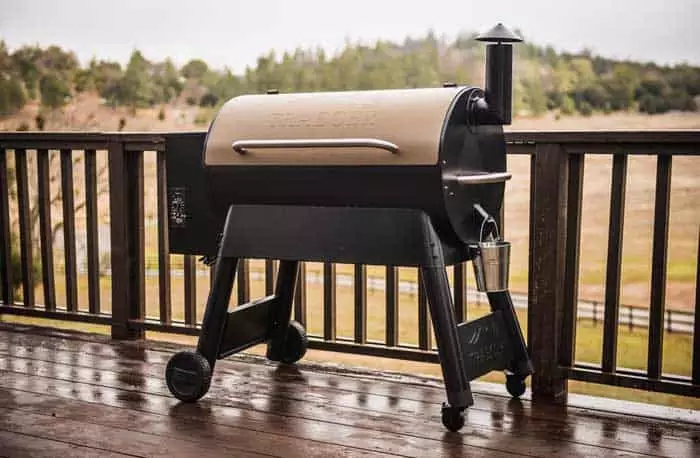Traeger Grills, with their reputation for quality and innovation, have managed to carve out a significant space in the competitive landscape of outdoor cooking. Offering a blend of traditional grilling with the convenience of modern technology, these grills have revolutionized the way many approach outdoor cooking. The question that often arises is the power specifications, more specifically, the issue of dual voltage.
In general terms, dual voltage appliances can operate safely on two different voltage standards. However, Traeger Grills are not dual voltage. They are designed for specific power requirements depending on the model and location of use.
This statement comes with nuances. When we delve into the specifics of the power requirements and electrical setup of Traeger Grills, a broader picture of their operation unfolds. The electrical intricacies of these grills have implications for their use and performance.
Dual Voltage: What Does It Mean?
To comprehend the dual voltage issue, it’s important to understand the concept itself. Dual voltage appliances are designed to operate on two different voltage standards. For example, some hairdryers, laptops, and chargers can work on both 110-120V (common in North America) and 220-240V (standard in many other countries).
Explanation of Dual Voltage Concept
Electrical appliances require a certain voltage to operate effectively and safely. The voltage is the pressure from an electrical circuit’s power source that pushes charged electrons (current) through a conducting loop. Different countries have different standard voltage levels.
Dual Voltage Appliances in Everyday Life
If an appliance is dual voltage, it can accommodate these variations, making it suitable for international use. Travel adapters that have a voltage switch are typical examples of such appliances.
Traeger Grills Power Requirements
Traeger Grills, like any electrical appliances, have specific power requirements to ensure optimal functionality and longevity. Operating these grills under the correct power conditions is crucial. Missteps can lead to performance issues, a decrease in the lifespan of the grill, or even safety concerns.
Traeger Grills Voltage Specifications
Traeger Grills are designed to work with a 110-120V power supply, the standard voltage found across North America. Each model, though varying in size, features, and function, adheres to this power requirement.
The grills are engineered with a set of components that, together, work under this voltage to deliver a seamless grilling experience. These components include the motor that powers the auger (responsible for delivering pellets from the hopper to the firepot), the hot rod (which ignites the pellets), the grill’s fan, and the digital controller that allows users to adjust the grill’s temperature.
Importance of Correct Voltage for Traeger Grills
Using the right voltage for any electrical appliance is critical for its operation and safety, and Traeger Grills are no exception.
- Optimal Performance: Running a Traeger Grill at the correct voltage ensures that it performs at its best. The grill can reach the right temperatures, maintain them effectively, and deliver a consistent cooking experience. For example, the auger speed, the ignition of pellets, and the speed of the fan all depend on the supplied voltage.
- Longevity of the Grill: When operated at the correct voltage, the components of a Traeger Grill won’t be strained or under stress, resulting in a longer lifespan for the grill.
- Safety: Operating the grill at the correct voltage ensures the safety of the user and reduces the risk of electrical faults, overheating, or fire hazards.
Are Traeger Grills Dual Voltage?
Now, to the crux of the matter: Are Traeger Grills dual voltage? The straightforward answer is no, they are not.
Analysis of Traeger Grills Voltage Capabilities
Traeger Grills are engineered to work at 110-120V, and this remains consistent across their product line. The grills’ motors, hot rods, fans, and digital controllers are all designed to function under this voltage, which is standard in the United States.
This specification does not mean these grills are restricted only to places with a 110-120V power supply. They can be used elsewhere with a suitable voltage converter, which we’ll discuss in the next section.
Factors Influencing Traeger Grills Voltage Use
Although Traeger Grills are not designed as dual voltage appliances, they can be adapted for use in regions where the standard voltage is different, for example, in many European countries where the standard voltage is 220-240V. This adaptation requires using a voltage converter that can step down the voltage from 220-240V to 110-120V.
However, there are a few considerations to bear in mind:
- Converter Specifications: The voltage converter used must be of high quality and have an appropriate power rating, usually higher than the grill’s wattage to handle the load efficiently.
- Safety Measures: It’s essential to follow all safety instructions when using a voltage converter to avoid any electrical mishaps. This includes correctly connecting the grill and converter, placing the converter on a flat, stable surface away from flammable materials, and not overloading the converter.
- Performance Impacts: While a voltage converter can allow a Traeger Grill to work in a different voltage region, there may be potential impacts on the grill’s performance. Users might notice variations in heating times, temperature stability, or overall efficiency. These variations are usually minor and do not significantly affect the grilling experience.
Advantages of Dual Voltage Appliances
Understanding the benefits of dual voltage appliances sheds light on why it can be desirable for Traeger Grills to have this feature.
Benefits of Dual Voltage: Portability and Versatility
Dual voltage appliances offer the convenience of being usable in various parts of the world without the need for a voltage converter. They offer increased portability and versatility, especially valuable for frequent travelers.
Dual Voltage Appliances and Power Efficiency
Dual voltage appliances also provide power efficiency. They automatically adjust to the power supply, ensuring they only use the necessary amount of energy.
Understanding Power Conversion for Grills
Despite Traeger Grills not being dual voltage, there are ways to adapt them for use in countries with a different voltage standard.
Necessity of Voltage Converters
A voltage converter can help in such situations. It modifies the output voltage from an electrical outlet to match the voltage requirement of a specific appliance.
Safety Measures When Using Voltage Converters
However, it’s crucial to use a converter with the right specifications and adhere to safety guidelines. Incorrect use can lead to appliance damage or even safety hazards.
How to Verify Voltage Requirement of Your Traeger Grill
To ensure you are providing the right voltage to your Traeger Grill, you can take the following steps:
- Check the product manual or label. This will usually contain the necessary electrical specifications.
- Contact Traeger’s customer support. If the information isn’t clear, their customer support can provide guidance.
Comparing Traeger Grills with Other Brands on Voltage Flexibility
Traeger Grills’ power requirements might prompt potential buyers to compare them with other brands that may offer dual voltage grills.
Comparison of Voltage Options in Other Grill Brands
While some brands might offer dual voltage options, it’s important to weigh the pros and cons before making a decision.
Traeger Grills vs Competitors: Pros and Cons
While Traeger Grills may lack in voltage versatility, they offer other advantages like superior build quality, patented technologies, and excellent customer support.
Frequently Asked Questions
1. Can I use a Traeger Grill in a country with 220-240V voltage?
Yes, you can, but you’ll need a voltage converter. It’s crucial to use one with the right specifications and follow safety guidelines.
2. Can using the wrong voltage damage my Traeger Grill?
Yes. Using a higher voltage than required can lead to overheating and damage. Using a lower voltage can cause underperformance.
3. Are there any dual voltage grills on the market?
There might be some dual voltage grills on the market, but they are not as common. It’s important to weigh the pros and cons before making a purchase decision.
Conclusion
The voltage requirements of an appliance can often be a deciding factor, especially for those intending to use it in different countries. The case with Traeger Grills is no different. Although not dual voltage, Traeger Grills’ performance, coupled with the right power setup, make them a robust contender in the outdoor cooking market.
The importance of using the right voltage cannot be overemphasized. While voltage converters can facilitate the use of Traeger Grills in countries with a different voltage standard, caution and careful adherence to safety guidelines are paramount.
Finally, while the lack of dual voltage might be seen as a limitation, Traeger Grills continue to excel in several other aspects. From their unique technologies to their build quality and customer support, they indeed provide a comprehensive outdoor cooking solution.







